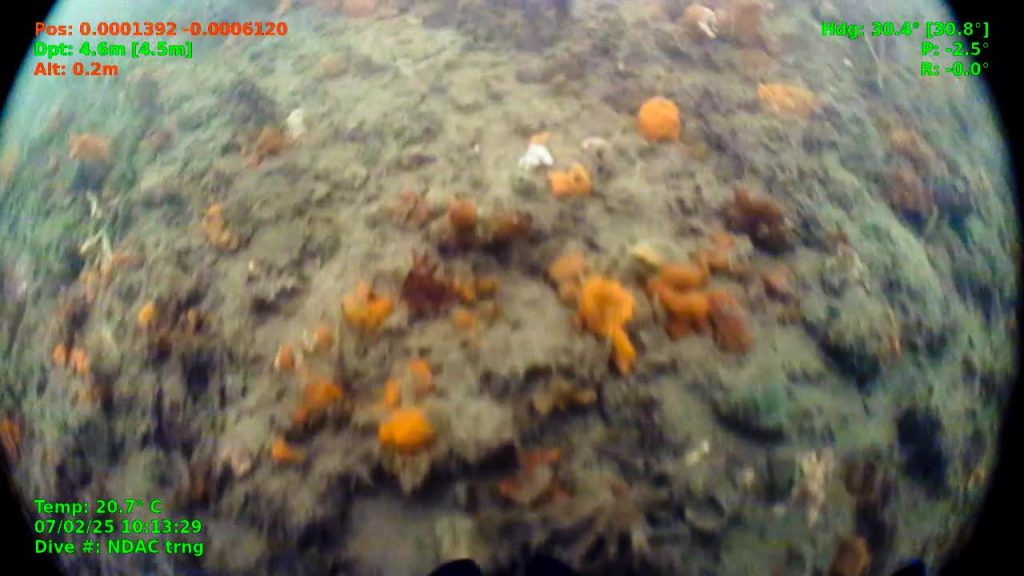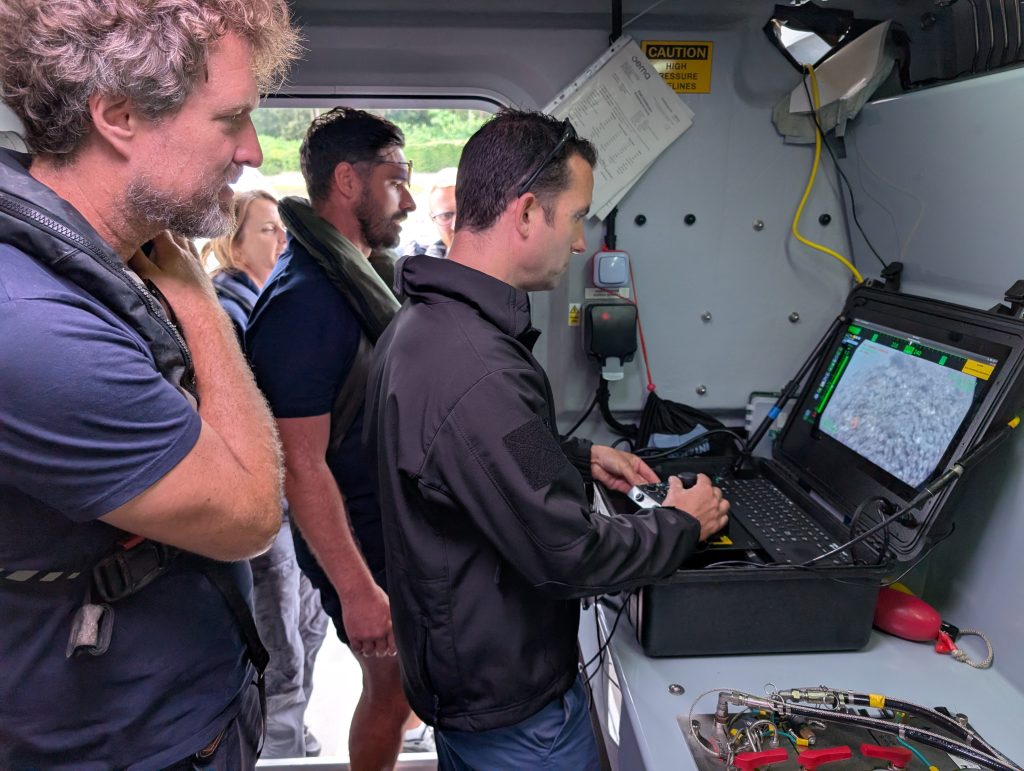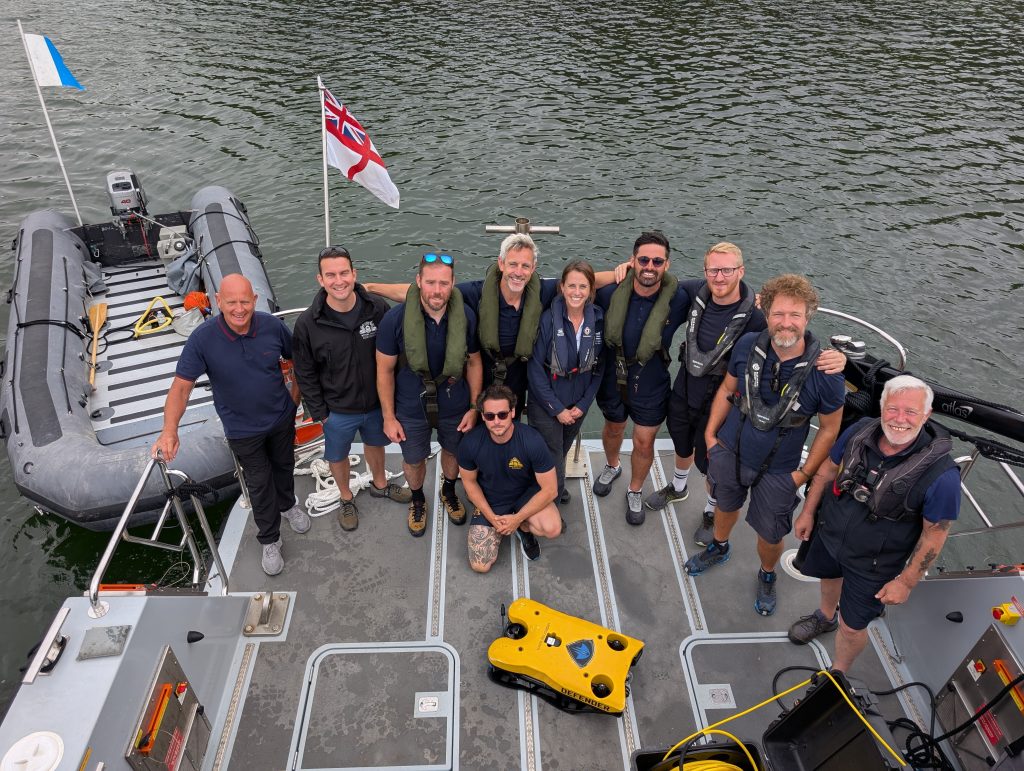A pioneering partnership between conservationists and the Royal Navy reveals flourishing marine life on a newly restored oyster reef in the River Hamble
The Solent Seascape Project, led by Blue Marine Foundation, has teamed up with the Royal Navy Diving & Threat Exploitation Group (DTXG), with support from the River Hamble Harbour Authority, to unveil the remarkable success of native oyster restoration efforts in the Solent.
Divers from the unit captured the first-ever continuous footage of the football-pitch-sized River Hamble reef, which is home to around 30,000 oysters, using a specialist Remote Operated Vehicle (ROV) – revealing a vibrant underwater habitat and confirming that oysters have successfully settled, established, and begun forming a complex ecosystem – all within two years.
“It was amazing to get eyes on the reef for the first time in such detail,” said Dr Luke Helmer, Restoration Science Manager at Blue Marine. “We are very grateful for the Royal Navy’s support in this endeavour. It was a nice surprise, observing how quickly the reef community has established and is now flourishing.”


Above: The new footage comparing an adjacent unrestored area (left) and the reef area (right).
The initial operation took place over the now vibrant reef zone, as well as the surrounding seabed. The contrast was striking: where reef-building materials and oysters had been placed in 2023, the underwater world was filled with life, appearing far richer than the nearby unrestored areas.
“It was great to see so many sponges, a big spider crab and quite a few fish species in a relatively short operation. It really highlights the importance of this habitat and why we need it back,” Dr Helmer added.
The operation underscores the urgent need to restore and protect marine habitats, not only for biodiversity but for the long-term health of coastal environments, and those that live by them, in the Solent. Oysters are ecological powerhouses – each one can filter up to 200 litres of water per day, improve water quality, support hundreds of marine species, and help protect coastlines from erosion, yet native oysters have been all but lost from the Solent.

Working together with the Navy
The collaboration marks the beginning of a promising relationship between the Solent Seascape Project and the Royal Navy, combining conservation science with naval expertise. The footage supports previous physical sampling conducted by Blue Marine, which also indicated increased biodiversity across the reef, and aids the Navy with their training in varied and unique environments.
Royal Navy Leading Diver, Dan “Boxy” Box, commented, “It was a great opportunity for the team to support oyster restoration as part of the Solent Seascape Project. Not only are we supporting such an interesting project which has huge impacts in protecting Britain’s waterways, it also allows our junior pilots the opportunity to gain valuable training with the underwater ROV which they can utilise in their core role as Mine Clearance Divers.”

How to save oysters in the Solent
Established in 2023, the first phase of the River Hamble reef was created by placing 468 tonnes of gravel and shell over a quarter of a hectare of the riverbed, forming a suitable habitat for oysters. Around 15,000 native oysters were then introduced to the site. Following this, further restoration work was undertaken earlier this year to double the size of the reef and 15,000 more oysters have been added.
Once the home of a thriving industry, the Solent’s oyster population has been lost over the past two decades due to pollution, invasive species, disease, and over-extraction. To reverse this decline, the Solent Seascape Project is restoring four hectares of oyster habitat alongside other critical ecosystems, including seagrass meadows, saltmarshes, and seabird nesting sites.
Commander Rory Armstrong, Commanding Officer DTXG added, “The Solent is our backyard for much of DTXG’s activity, and we take very seriously our environmental obligations. This collaboration with Solent Seascape is a great example of partnering with other members of the local maritime community and of the Royal Navy as a force for good in home waters.”




